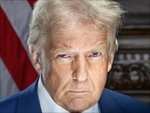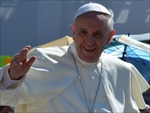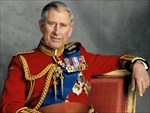archives

archives

The Tiananmen Square Incident of 1989 was a pro-democracy movement in Beijing, led primarily by students demanding political reform, freedom of speech, and government accountability. It began in April after the death of reformist leader Hu Yaobang and grew into mass protests. By early June, the Chinese government declared martial law and deployed troops and tanks to suppress the demonstrations. On June 3–4, soldiers forcibly cleared Tiananmen Square, leading to a violent crackdown. Estimates of casualties range from hundreds to thousands, but exact figures remain unknown due to government censorship. The incident is a highly sensitive topic in China, with strict restrictions on discussions and information.
The Tiananmen Square Incident: A Turning Point in Chinese History
The Tiananmen Square Incident, also known as the June 4th Massacre, was a pro-democracy protest in Beijing that ended in a violent military crackdown. Taking place in the spring of 1989, this movement was led mainly by students demanding political reform, greater freedom of speech, and an end to government corruption. The event remains a highly censored and sensitive topic in China, but it is recognized globally as a pivotal moment in the country’s modern history.
Background and Causes
Throughout the 1980s, China underwent economic reforms under Deng Xiaoping, which improved the economy but also led to widespread corruption and inflation. Many citizens, especially students and intellectuals, were frustrated by the lack of political reforms accompanying these economic changes. The death of Hu Yaobang, a pro-reform Communist Party leader, on April 15, 1989, became a catalyst for mass demonstrations, as he was widely admired for his support of political liberalization.
Key Events of the Protest
April 15 - Student Protests Begin
Thousands of students gather in Tiananmen Square to mourn Hu Yaobang and call for political reforms.
April 18-22 - Growing Momentum Protests spread across universities in Beijing. On April 22, Hu Yaobang’s official memorial service is held, and thousands of students attempt to present a petition to the government, but they are ignored.
April 26 - Government Condemnation
The People’s Daily, a state-run newspaper, publishes an editorial calling the protests "turmoil," signaling that the government would take a hardline stance.
May 13 - Hunger Strike Begins
In an effort to gain government attention, thousands of students begin a hunger strike in Tiananmen Square, drawing widespread public and international support.
May 15-19 - Gorbachev’s Visit and Martial Law
Soviet leader Mikhail Gorbachev visits Beijing on May 15, but the ongoing protests overshadow the visit.
On May 20, the government declares martial law, and troops are deployed to Beijing, but they are initially blocked by civilians.
June 3-4 - Military Crackdown
The Chinese government, led by Deng Xiaoping and Premier Li Peng, orders the People’s Liberation Army (PLA) to forcefully clear Tiananmen Square.
On the night of June 3 and early June 4, soldiers and tanks move in, firing live ammunition at unarmed civilians and protesters. Casualty figures remain disputed, but estimates range from several hundred to thousands of deaths.
June 5 - The Iconic "Tank Man"

An unidentified man, known as "Tank Man," stands in front of a column of tanks, temporarily halting their advance. The image becomes a symbol of peaceful resistance and is one of the most famous photographs of the 20th century.
Aftermath and Global Impact
Following the crackdown, the Chinese government conducted mass arrests, silenced dissent, and strengthened state control over media and public discourse. Western nations imposed economic sanctions, and China faced international condemnation. However, the government justified its actions as necessary to maintain stability and prevent chaos.
Despite the heavy censorship in China, the Tiananmen Square Incident remains a powerful reminder of the struggle for political freedom. While China has since become a global economic powerhouse, the demand for democratic reforms remains a sensitive issue.
Conclusion
The Tiananmen Square protests of 1989 were a defining moment in modern Chinese history, reflecting the people's desire for political change. Though the movement was crushed, its legacy endures through discussions of human rights, government accountability, and the ongoing debate over political freedoms in China. The bravery of the protesters and the tragic events of June 4th continue to resonate worldwide as a symbol of resistance against oppression.




















